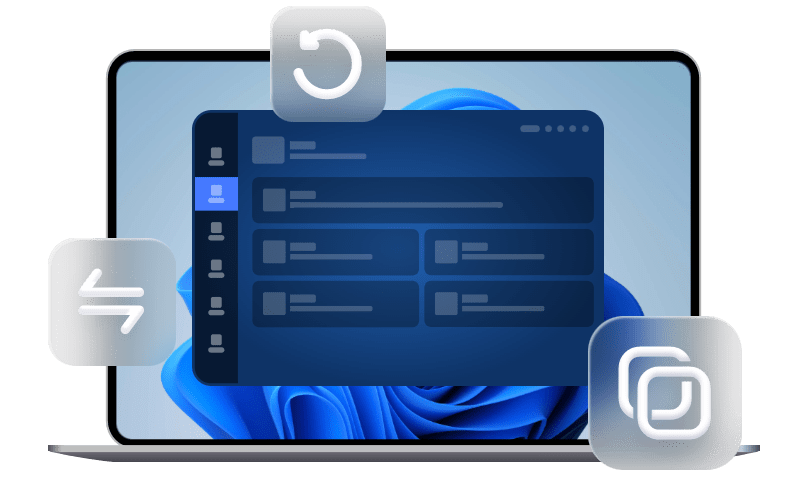(Fixed) Can I Delete Old Backups from External Hard Drive
This article addresses the common question, "Can I delete old backups from external hard drives?" It explores the implications of deleting backups, the best practices for managing storage, and the potential risks involved. Readers will learn effective methods for decluttering their storage while ensuring they maintain access to crucial data.
Can I Delete Old Backups from the External Hard Drive
“I am running Windows 7 on an HP Home premium PC. I run a backup to an external hard drive, (Hitachi 250GB) once a month. As space was getting limited, I deleted some old backups. I was then told that when you run a backup, only files/ folders are added since the previous ones are added. Is this so, or is a full copy made each time? Will a complete backup be made of files I have deleted previously next time I back up?”
– answers.microsoft.com
How to Clean Old Backups from External Hard Drive
What should I do with old backups? If you're looking for ways to efficiently remove old backups from your external hard drives, you're not alone. As time goes on, backup files can take up a lot of space, making it challenging to manage your storage. In this guide, we'll discuss effective strategies for cleaning up old backups from your external hard drives, helping you optimize storage and keep your data secure.
Method 1: Manual Deletion
To manually delete old backups from your external hard drive, follow these steps:
1: Plug your external hard drive into your computer and ensure it is recognized.
2: Open File Explorer locate the folder and select the old backups you wish to delete.
3: Right-click on the selected backups and choose the Delete option from the context menu.
4: Confirm the deletion and wait for the process to complete.
Although there are fewer steps provided here, manual deletion is not as easy and convenient as you might think. If you use this external hard drive exclusively for storage backup, there must be tons of backups with different updates. So, it will take you a lot of time to manually find and delete specific old backups. If you accidentally delete the wrong backup containing important file data, it will cause permanent loss, which can not be recovered. That is why we recommend using professional backup software to automatically manage and delete your old backups.
Method2: Use Professional Backup Software
Manually deleting backup files can be a hassle, especially if you have to do it often. Using a different backup program can help you manage your backup space more easily. For example, AOMEI Backupper Professional is a powerful tool for backing up and restoring data on PCs with Windows 11, 10, 8, and 7. It includes all the features of standard Windows backup tools, plus additional advanced options that make it simpler to protect your data effectively. This way, you can ensure your files are safe without the stress of constant manual management.
📌It features a simple interface that anyone can navigate easily, making all its functions accessible to everyone.
📌It works with all types of storage devices, whether you’re using an internal or external hard drive, USB drive, SSD, HDD, or SD card.
📌This tool provides all the essential backup options, including File Backup, System Backup, Partition Backup, and Disk Backup.
📌In addition to regular full backups, it also supports scheduled incremental and differential backups, which save space by only backing up the data that has changed.
📌It offers different backup schemes based on quantity, time, and space, allowing for the automatic deletion of older backup files to help manage your storage effectively.
Backup Options:
Tailored to your backup preferences, you have the flexibility to choose among system backup, disk backup, partition backup, file backup, mail backup, and cloud backup options. Furthermore, each backup type supports schedule backup and automatic deletion, ensuring seamless management of your backup tasks.
Backup Schedule:
When selecting a backup schedule, you have the option to set the backup task to run at specific intervals such as daily, weekly, or monthly, or trigger it based on certain events. If you prefer the backup to execute when the USB plug-in, you can select the option to run scheduled backups using the Advanced feature.
Backup Cleanup:
Once you've set up a scheduled backup, you can activate Automatic Backup Cleanup to automatically remove old backup files, ensuring that the remaining backup images remain recoverable. Depending on your scheduled backup configuration, select the appropriate backup scheme to effectively manage disk space.
Tips:
1. Incremental backup builds upon the previous backup. If you delete an incremental backup, former incremental backups become invalid. Hence, it's advisable to create a full backup before deleting one. Conversely, a differential backup is dependent on the last full backup, making it safe to delete any differential backup as long as the full backup remains intact.
2. If you're unsure, rely on the built-in backup schemes to manage your backups and disk space efficiently, alleviating concerns about Windows 10 backup disk space constraints.
Why: Can I Delete Old Backups from the External Hard Drive?
The straightforward answer is yes, you can delete old backups from an external hard drive. However, several considerations must be taken into account to ensure that the decision is beneficial rather than detrimental.
Why Old Backups Matter
- Historical Data Preservation: Old backups can contain important versions of files that may have changed or been deleted over time.
- Redundancy: Having multiple backups ensures that if one fails, others are available.
- Recovery Options: In cases of data corruption or malware attacks, older backups might be the only way to recover lost information.
Bonus: What are the Risks of Keeping Old Backups?
Backing up your data is essential for protecting important files, but as time goes on, old backups can pile up and take up valuable space on your external hard drive. This can lead to a cluttered storage environment, making it harder to find what you need. Additionally, keeping too many outdated backups can slow down your device's performance and make managing your files more complicated. Keeping outdated backups poses several risks, including:
Slower Performance: Having unnecessary backups can slow down your external hard drive, making it harder to access files quickly.
Confusion: Holding on to many outdated backups can make it tricky to find specific files or versions when you need them.
Security Risks: Old backups might have sensitive information that you no longer need, which can create security risks if someone unauthorized accesses them.
Storage Issues: Old backups can take up too much space on your external hard drive, leaving little room for new backups or other important files.
FAQs About Deleting Old Backups
Q 1: Is it possible to recover deleted backups?
A 1: In some cases, deleted backups may be recoverable using data backup software. However, it's crucial to act promptly and avoid overwriting deleted backup files to increase the chances of successful recovery.
Q 2: Can I delete backups directly from my external hard drive without software?
A 2: Yes, you can manually delete backups from your external hard drive using File Explorer or similar file management tools. However, this method could be time-consuming for large backup collections, and it is easy to lose important files and data in those backups.
Q 3: Are there any risks associated with automated backup deletion?
A 3: Automated backup deletion can help streamline the management process, but it's essential to configure settings carefully to avoid unintended data loss. Review deletion parameters regularly to ensure they align with your backup management strategy.
Tips for Effective Backup Management
-
Always Maintain Recent Backups: Before deleting old backups, ensure you have up-to-date versions of your critical files.
-
Regularly Review Backup Needs: As your storage requirements evolve, regularly assess which backups are necessary and which can be deleted.
-
Utilize Cloud Storage for Redundancy: Consider using cloud storage alongside your external hard drive for an additional layer of data protection.
Conclusion
In conclusion, effectively managing old backups on your external hard drive is crucial for maintaining optimal storage and ensuring your data remains accessible. While the question "Can I delete old backups from an external hard drive?" may initially seem straightforward, it involves careful consideration of your data needs and backup strategy. By regularly assessing the necessity of your backups and utilizing tools like AOMEI Backupper, you can confidently delete unnecessary files without compromising your data integrity.

